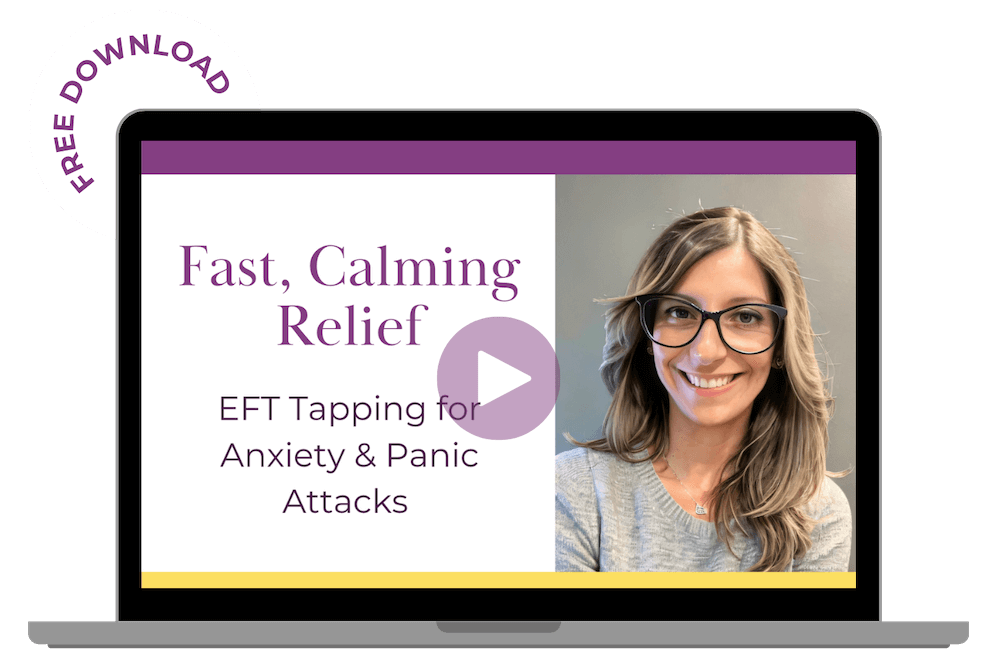In life’s tumultuous sea, grief is the maelstrom that relentlessly navigates itself around our hearts. It’s upon us like a storm, surrounding every emotion with its chilling tendrils and leaving an indelible mark on our psyche. We stand at the shoreline of our trauma, watching as the waves of our experiences crash with devastating force. This piece is not just about surviving this storm, but propelling forward from it.
The End of Normal: A Personal Voyage Through Grief
Grief often finds us unprepared in the wreckage of our shattered narratives. The realization that life, by its very nature, comes with no guarantees crashes upon us with the force of a tidal wave. Whether it be the loss of loved ones, one’s sense of safety, or pieces of a future once imagined, the end of normal is a universal human experience that touches all of us in some capacity. My own voyage through grief began with the sudden death of a loved one, with more losses entwined in the narrative strands of my life’s tapestry.
It’s an unnerving plunge into the unknown, where every step forward is a battle against forces that seek to keep you submerged in sorrow. The tempest within, fueled by emotions too vast for expression, demands to be felt in its entirety before it offers the solace of stillness and acceptance. Sharing such experiences is a lifeline to those adrift at sea, for it assures others that they are not alone in their grief.
Finding Compassion in Sorrow’s Compass
A guiding star in my own process became my ability to extend self-compassion. We are often our harshest critics, demanding resilience when we are at our most vulnerable. In the wake of such upheaval, our frameworks for life are shifted, and our emotional compasses may become unreliable, pointing us in directions foreign and daunting. It is then that we must learn to be gentle with ourselves, offering up the understanding and acceptance we so readily offer to others.
Drawing a map of this new terrain, where the landmarks are moments of shared pain and understanding, helped me redefine my identity within the context of my grief. It was not a process of moving on, but a constant negotiation of moving forward, one where the past is forever intertwined with the present. This compassion, though a solitary and individual pursuit, finds its roots in the community of souls undergoing similar storms.
Anchored in Mindfulness: A Sanctuary Amid Chaos
Mindfulness practices provide an anchor to keep oneself grounded throughout the tumult. They teach us to be present in the pain, transforming it from an adversary to a teacher. Mindfulness is an art I honed on my personal voyage, one that involved acknowledging my feelings without passing judgment on their duration or intensity. Through meditation and yoga, I found temporary islands of peace amidst the surges of my emotions.
Mindful practices are bridges we build between our past selves and the individuals we are becoming through our grief. They are a sanctuary where we can unravel our tangled thoughts and emotions without fear of judgment. Engaging in everyday activities with full awareness combats the dissociation common in traumatic grief, bridging the chasm between the personal and the collective experience of loss.
Sails of Support: Navigating Together Through Shared Experiences
No ship may brave a storm alone, and it is through shared experiences that we find sails of support to guide our vessels. Support is the lifeblood of the grieving process, a relational necessity that fills the rupture left by loss. In my darkest moments, it was the presence of individuals willing to share in my pain that buoyed me across the fiercest of waves. Sharing these experiences offers a collective solace to those whose sails have been ripped apart.
These connections are not just about receiving comfort; they are about forging new bonds in the heart of shared trauma. They create a chorus of voices that validate our experience, reminding us that grief, in all its complexities, is but a facet of the human narrative. Shared narratives knit our broken sails and allow us to chart a common course towards healing and resilience.
The Lighthouse of Legacy: Illuminating the Path Forward
Legacy acts as a lighthouse, casting light on the path forward and illuminating the memories of those we have lost. This beacon is a testament to the enduring presence of our loved ones in our lives, a force so compelling that it steers the very direction of our journeys. Honoring the legacies of those who have departed has an alchemical effect on grief, transmuting sorrow into purpose.
The legacy of the departed navigates us away from the treacherous shoals of despair towards the calm waters of remembrance. It is within the warmth of these memories that we may find the motivation to engage meaningfully with life once more. Legacy weaves a thread of continuity between the past and the present, a lifeline to the soul adrift in the vast expanse of sorrow.
Setting Course for Transformation: The Positive Ripple of Personal Grief
While grief is often regarded solely through the lens of its negative impact, there lies within it the potential for transformation. My story attests to the positive ripples personal grief can create, for it calls us to reevaluate our lives and relationships. Grief spurs an examination of our values, compelling us to live more fully in alignment with our truths.
The changes instigated by grief propel us towards a more authentic expression of our being. They alter our courses, sometimes charting entirely new destinations that align with the enlightened perspective grief provides. It is a call to live with intention, making conscious choices that honor the memory of our dearly departed and reinvigorate the threads of our personal narrative.
Concluding Reflection: Hope and Resolve Beyond the Tempest
In the languid aftermath of a storm, there emerges a peace that is difficult to articulate. It is not the absence of pain, but a harmonious coexistence with the animate world that surrounds us. For those currently navigating their own tempests, my closing reflection is a reminder that hope and resolve surge beyond the horizon. The ripples of grief eventually recede, yielding once more to the tides of a life transformed.
Silvia Araya, a beacon of hope amidst the waves, extends her light to all those weathering their personal gales. Her approach, holistic and compassionate, weaves a narrative of healing that transcends the sorrow rooted in traumatic events. In her commitment to trauma-informed care, Silvia carves the way for a collective healing, a shore upon which we may all find a semblance of rest.
It is through the personal tales shared in spaces like these that the isolation of grief may be dispelled. Each narrative, a compass bearing testament to the human spirit’s indomitable nature, leads the way to the sanctuaries of a collective understanding. It is there, in the exchanges of our stories, that we may find the unspoken language of solace — a language that traverses the barriers of time, culture, and individual experience.
To those who find themselves in the depths of their personal storms, may this be a gentle hand extended toward you in solidarity. May the echoes of our shared experiences reverberate with the promise that the path through the storm, though arduous, is navigable. And may the legacy of your grief be a tapestry woven with the richness of your endurance, the compassion of your heart, and the wisdom of your soul.
In the labyrinth of the human psyche, where dark alleys intertwine with the light, one can’t help but notice the stifling grip some emotions have on our actions. Procrastination, a behavior often derided and dismissed, is a wound that festers in the unhealed spaces of our past. This post is not just about time management or efficiency but a deep plunge into the sensitive weaves of trauma and its uncanny parallels to the lingering habit of delay.
Understanding the nature of trauma, and how it intertwines with day-to-day struggles against procrastination, is crucial in the path toward personal healing and professional efficacy. Here, we tread the gentle balance between acknowledging pain and finding the fortitude to conquer it, one shared story at a time.
Understanding Trauma’s Shadow Over Procrastination
The word ‘trauma’ itself is an immense container, filled with countless human experiences that have challenged and reshaped lives. Whether it’s the legacy of a turbulent childhood, the lingering echoes of violence, or the unseen wounds of societal crises, trauma is varied, visceral, and relentless.
But how does procrastination—a seemingly innocuous delay—connect with such profound pain? The bridge lies in the very mechanisms of the mind. When past experiences leave an indelible mark of fear and helplessness, tasks in the present can often seem like distressing echoes of those moments.
It’s a cycle that paralyzes, for getting a start is to confront not just the task at hand but the specters that procrastination, ironically, feeds.
The Elusive Chase for Completion
Procrastination isn’t merely a flippant shrug toward responsibility; it’s a complex dance of anxiety and avoidance. For trauma survivors, procrastination can be a bid for control, a retreat into the comfort of known distress, as peculiar as that notion seems.
Imagine the suppressed panic of an individual who has learned, through adversity, that forward motion often brings pain. The task promised to bring healing and closure also beckons sleepless nights and uneasy days.
However, the very act of confronting these delayed tasks, by its nature, begins to dismantle the fortress of protection that procrastination has built. It’s a perilous yet liberating path, where freedom from the past is exchanged for a present where anticipation of failure no longer looms.
Strategies for Reclaiming Momentum in the Face of Trauma
At this juncture, the question morphs from ‘why procrastinate?’ to a more resolute ‘how to proceed?’ Strategies rooted in cultivating patience and compassion for oneself can be the first—often the most challenging—step.
Mindfulness and Grounding Techniques
Mindfulness—a practice steeped in the present—erects impermeable boundaries against the incursion of past ghosts. Grounding techniques anchor the self in the safety of the current moment, rendering the fears of future failure and past pain as ephemeral whispers.
Breathing exercises, tactile stimulations, and the naming of immediate surroundings—all serve as vital lifelines out of the tumultuous shore of trauma’s reverberations.
Breaking the Impenetrable into the Irreducible
Confronting significant tasks after trauma can feel like an ant lifting boulders. Thus, the concept of ‘chunking’—fracturing convoluted tasks into digestible morsels—becomes our ally.
The shift is monumental. What once seemed an insurmountable peak is now a series of manageable ascents. Every summit conquered not only inches us closer to completion but also stands as a testament to resilience and resourcefulness.
Professional Guidance and Support
Seeking help is never a sign of weakness—it is the first step toward reclaiming one’s narrative. Professional therapists, life coaches, or supportive groups provide the much-needed sanctuary where fears and ambitions can be vocalized in safety.
Their roles are not merely prescriptive but also catalytic—they hasten the healing process by challenging the tales of tragedy that have long chained one’s identity.
Navigating Personal Stories and Case Studies
Throughout history and our modern-day context, stories of survival weave a common theme: a moment of decision, an inexplicable resolve to walk through the fires that once devoured hope.
We share these narratives not to diminish nor to question the validity of one’s struggle but to erect the understanding that, within us all, lies the indomitable spirit to rise against our own tides. From war veterans to abuse survivors to those persecuted by the violence of systemic oppression, every voice carries the weight of an epoch.
Conclusion: A Call to Arms Against Postponed Beginnings
In the labyrinth of trauma, the path to productivity is neither straightforward nor devoid of pitfalls. It’s a sequence of conscious, oft-painful choices that lead to luster amid the ruins.
By understanding the interconnected nature of trauma and procrastination, we peel back the layers of self-judgment and understand that the remedy does not lay solely in personal effort. It is a communal endeavor—a concert of empathetic support networks, professional guidance, and the nurturing of an inclusive dialogue around mental health.
We conclude not with the premise that healing is found at the completion of tasks, but that the completion of tasks is a manifestation of healing. With every deadline met, every project finished, and every fear that stands to delay one’s ambition negotiated, we inch closer to a tomorrow where procrastination is a mere footnote in the grand narrative of self-discovery and empowerment.
Additional Resources and Support
For those who resonate deeply with these struggles, there is solace in the knowledge that you are not alone. There are support groups, online forums, and dedicated professionals who stand ready to guide you through the tumultuous terrain of the past.
For those in immediate need, consider the following support options:
- National Suicide Prevention Lifeline (USA): 1-800-273-8255
- Crisis Text Line (USA): Text HOME to 741741
- SAMHSA (Substance Abuse and Mental Health Services Administration) National Helpline (USA): 1-800-662-HELP (4357)
- NHS Urgent Mental Health Helplines (UK): 111 for adults, 999 for young people
Remember, the pursuit of happiness and productivity is a communal odyssey that no one should undertake in silence. Your voice, your story, and your struggle are not just valid—they are instrumental in shaping a world where mental health is not just discussed but deeply understood and compassionately supported.
Given the depth of understanding needed to bridge the gap between trauma and procrastination, and considering the audience’s nuanced experiences, here are a series of blog post ideas that not only delve into the interconnection of these two aspects but also offer a compassionate, insightful perspective. These ideas aim to resonate with those seeking understanding, empathy, and actionable guidance on their journey toward healing and productivity.







